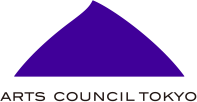2018/03/16
Arts Pro Bono: A New Concept to Meet New Needs (2)
Spreading the Arts Pro Bono Model
Executive Director, Platform for Arts and Creativity
Akiyoshi Watae
In my previous column, “The Potential for Arts Pro Bono: Will it Lead to Innovation in Arts and Culture Organizations?” I discussed interest in arts pro bono services on the part of both professionals capable of providing such services and the arts and culture organizations that might utilize them. This time, I’ll delve further into the significance of promoting the arts pro bono model.
First of all, it is my sense that those considering a career in the field of arts and culture typically feel they are confronting a dualistic choice: either accept the harsh working conditions of the art industry, or give up on working in the field. Essentially, there should be a more nuanced set of choices regarding how one engages professionally with the arts and culture. Providing pro bono services in the arts can serve as one effective option. By enabling a wide range of individuals to get involved in the field, the system not only promotes the self-realization of those individuals, but also strengthens the industry as a whole.
The Agency for Cultural Affairs and other government agencies have devoted significant energy to arts management training, with the goal of encouraging the arts and culture by developing the management abilities of organizations that form the foundation of the field. The majority of these efforts have been aimed at altering the attitudes of those working within the industry (or those considering entering it). Another effective way to achieve this goal is to bring in business people who are not necessarily steeped in the values of the art world.
The Basic Act for the Promotion of Culture and the Arts (which took effect in June 2017) emphasizes cooperation between the arts and culture and other fields including “tourism, community development, international exchange, welfare, education, and industry.” There are limits to what can be done toward this goal by professionals within the field of arts and culture itself; it will likely be more effective to bring in workers who already have expertise in those other fields.
Sensing these possibilities for the arts pro bono model and hoping to expand its use, the Agency for Cultural Affairs and the Platform for Arts and Creativity organized two related events this fiscal year: a seminar entitled “What’s Art Pro Bono” (December 12, 2017; approx. 100 participants) and a “matchmaking” event entitled “How to Get Started with Arts Pro Bono” (January 20, 2018; approx. 80 participants) at which arts and culture organizations were connected with pro bono workers and intermediary organizations that can introduce such workers.
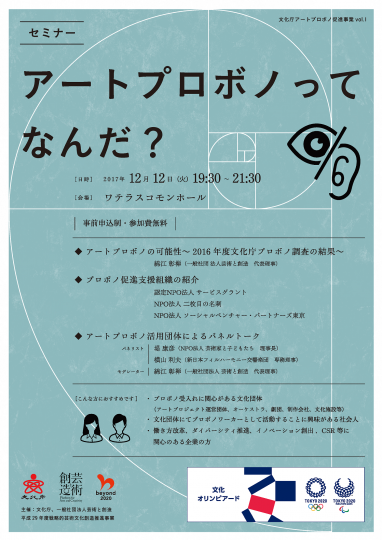
The “What’s Arts Pro Bono?” seminar flyer
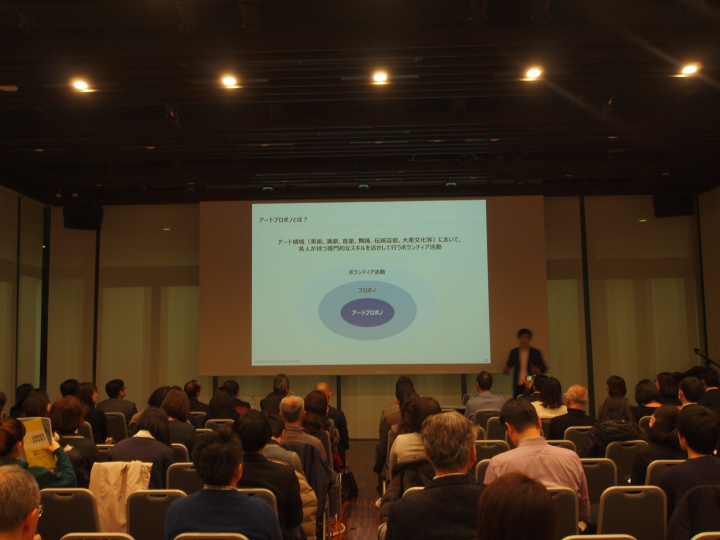
The “What’s Arts Pro Bono?” seminar (December 12, 2017)
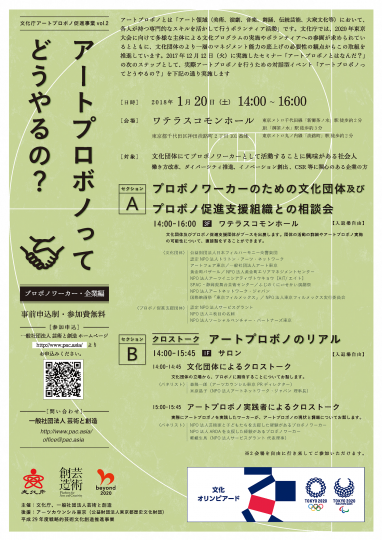
The “How to Get Started with Arts Pro Bono” event flyer
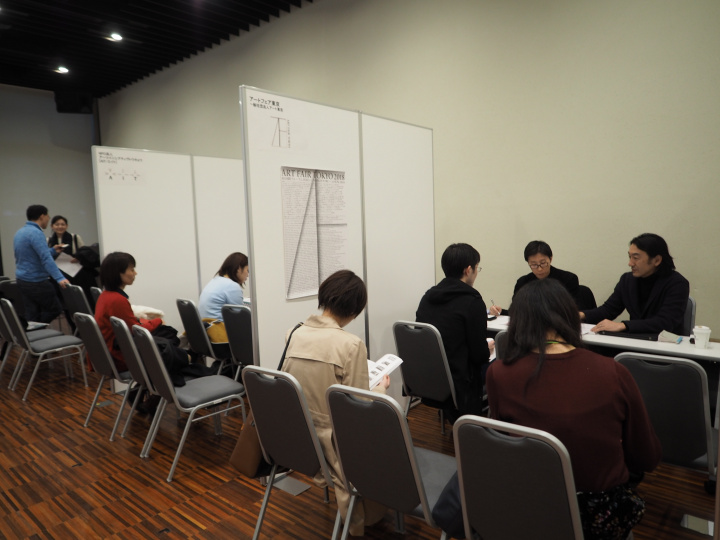
The “How to Get Started with Arts Pro Bono” event (January 20, 2018)
The seminar in particular attracted wide interest, with all available spots filling up within several days of opening registration. However, while publicity for these events was targeted at both pro bono workers and arts and culture organizations, pro bono workers responded more enthusiastically, attending both events at over twice the rate of staff from arts and culture organizations.
In addition, interviews conducted by pro bono intermediary organizations (Service Grant, Social Venture Partners Tokyo, Nimaime no Meishi (NPO), etc.) suggest that compared to professionals in other fields, those working at arts and culture organizations have a lower than average interest in making use of pro bono services.
A survey*1 conducted last year by the Agency for Cultural Affairs, along with other sources, has shown that plenty of pro bono workers wish to provide services to arts and culture organizations. Furthermore, as shown in the graph below, we know what types of support art and cultural organizations wish to provide. In this sense, it is clear that the issues we must resolve in order to expand use of the arts pro bono model are raising awareness of the system among arts and culture organizations and helping them recognize what pro bono services they might benefit from.
Interviews with arts and culture organizations conducted as part of the same survey, as well as promotional activities aimed at encouraging these organizations to participate in the related events held this fiscal year, have revealed that they are largely unaware of the pro bono concept. Those organizations that have heard about it tend to be concerned about accepting workers with inadequate experience in the arts and culture or who do not share similar values, as well as how to go about receiving support from pro bono workers, the time and effort needed to communicate with them, and the quality of the specialized skills such workers have.
Regarding the latter set of concerns, it is important for the Agency for Cultural Affairs and organizations such as my own to help resolve these worries by collecting and proactively publicizing successful examples of the arts pro bono model. As for addressing the overall lack of awareness, one obstacle lies in the fact that even the intermediary groups that support arts and culture organizations and the staff of related government agencies and cultural facilities are themselves largely unaware of the pro bono concept. One important first step toward developing the art industry is to increase awareness of arts pro bono, including among these groups, and to discuss more widely the potential inherent in the model.
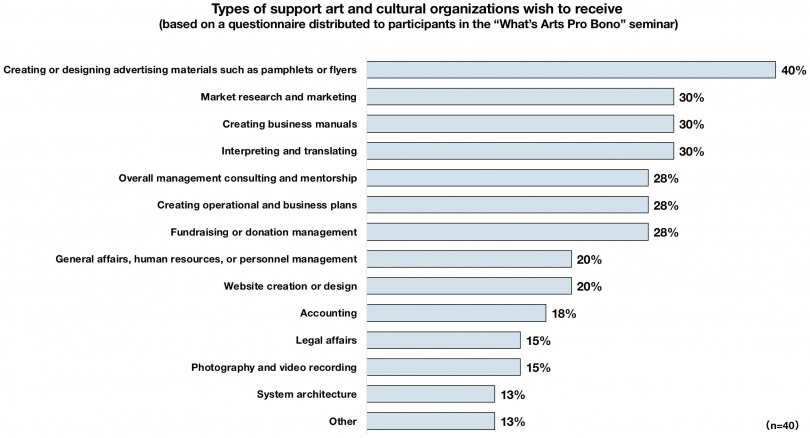
Source: Platform for Arts and Creativity
Enlarge image: JPEG / PDF

